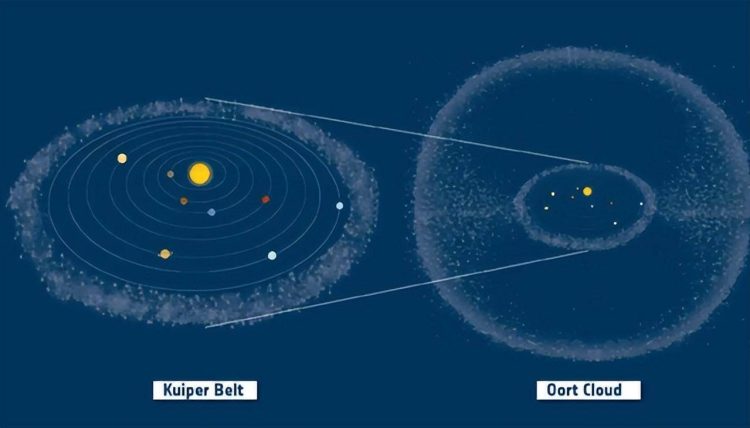A Humbling Space Odyssey Awaits
Our species, with all its technological bravado, stands at the very threshold of its cosmic homestead, the Solar System, and the vast dominion beyond remains but a distant dream. We may fancy ourselves as intrepid cosmic wanderers, yet we linger by the gates of a stellar “newbie village.”
Solar System Boundaries:
The Limit of Our Reach
It is with a measure of chagrin we acknowledge our predicament—we have not yet stepped beyond the first level in our universal “game,” the Solar System. From the vast cosmic perspective, our celestial neighborhood barely registers, whilst drawing the boundaries poses an astronomical challenge to mankind.
The Misunderstood Scale:
Bigger Than Imagined
Our Solar System is quite the titan, and the familiar tableau of the eight planets barely scratches the surface. Even Pluto, the erstwhile ninth planet now demoted to a “dwarf planet” status, sits at the precipice, yet not at the edge.
Beyond Pluto:
Moving past Pluto lies the Kuiper Belt, and further beyond stretches a medley of interstellar material, akin to a cosmic “junkyard.”
The Forlorn Probes:
Voyaging Through Uncharted Vastness
Our farthest spacecraft have sent back a sobering reality—they are a staggering 21.6 billion kilometers away, yet the boundary of our Solar System, the proverbial exit, eludes them still.
The Oort Cloud Enigma:
The Solar Sytem’s Outer Shell
Scientists have situated the outermost boundary at the Oort Cloud, some 1 to 1.87 light-years distant—a figure that defies the layperson’s hopes of exploration within their lifetime.
Boundary Rationale:
The Solar System’s “edge” is not rigid but defined by human criteria. If we measure by the reach of the solar wind, cruising past Pluto might suggest an exit has been made. However, the astronomical definition asserts that only upon encountering an entirely different cosmic environment can one claim to have truly left the Solar System.

Man’s Tenacity:
Pushing Against the Boundaries
In efforts to breach this cosmic barrier, humanity has launched various probes. The payoff may be unlikely, yet these endeavors symbolize our inaugural stride towards the cosmos.
Voyager’s Tale:
An Epochal Journey Begun in the 20th Century
During the 1970s, claiming cosmic milestones with opportunistic launches, America sent forth Voyager 1 along with its sibling Voyager 2. These missions optimized a planetary alignment and gravitational assists, epitomizing efficient space exploration by ticking off planetary checkmarks in a single, well-orchestrated flyby.
Voyager 1’s Epic Traverse:
Commencing its interstellar odyssey in the autumn of 1977, Voyager 1 has traveled over 40 years, reaching approximately 21.6 billion kilometers from Earth—close to Pluto, yet still under the solar wind’s dominion, and considerably short of the Oort Cloud.
Hubris versus Harsh Reality:
The Inevitability of Silence
Aspirations may flare with the notion of interstellar travel stretching into centuries, but practicality douses such flames. We anticipate by 2025, Voyager 1 will sever its communications with Earth, its power dwindling. Bereft of the celestial mechanics that aid passage within the Solar System, even an upgraded “super battery” wouldn’t suffice for the windows of opportunity beyond our Solar shores are unyielding.
Conclusion:
Trapped by Gravity, Challenged by Distance
Our quest to venture out of the Solar System serves as a stark reminder of the limitations imposed by our current technology and the unfathomable distances of space. With our earliest cosmic probes on the brink of silence, we stand humbled at the enormity of the task to venture beyond the edges of our Sun’s reach, a boundary where the gravitational dance with the planets ceases, and the unassisted journey through the void begins.


















































Discussion about this post